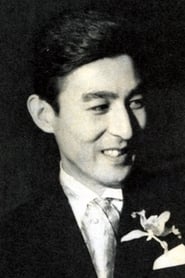Cast
View AllAkira Takarada
as Hideto Ogata
Momoko Kôchi
as Emiko Yamane
Akihiko Hirata
as Daisuke Serizawa
Takashi Shimura
as Kyohei Yamane
Fuyuki Murakami
as Professor Tanabe
Sachio Sakai
as Newspaper Reporter Hagiwara
Ren Yamamoto
as Masaji Yamada
Toyoaki Suzuki
as Shinkichi Yamada
Toranosuke Ogawa
as President of Company
Hiroshi Hayashi
as Chairman of Diet Committee
Seijirô Onda
as Parliamentarian Oyama
Kin Sugai
as Ozawa-san
Haruo Nakajima
as Godzilla
Tsuruko Mano
as Mrs. Yamada
Kokuten Kōdō
as The Old Fisherman (uncredited)
Crew
Director
- Ishirō Honda
Producer
- Tomoyuki Tanaka
Reviews
John Chard
The big political atomic lizard is cheesed off!
After H bomb testing in the pacific, ships start to go missing and a remote island is apparently under attack from a prehistoric monster. Japanese scientists hasten to find out just what is going on, what they find is Gojira, and he is mightily hell bent on destruction...next stop Tokyo.
Gojira is such an influential film, it has spawned many sequels, remakes, copyists, and numerous homages, and of course there is two versions of this film for the viewer to choose from. The American version is a decent enough watch, it has integrated Raymond Burr into this original versions plot, and although it's unintentionally funny at times, it holds up pretty well as a no brainer piece of fluff. But it fails to compare to this original Ishirô Honda classic because this has a wonderful ambiance of fear at its heart, coming some 10 years after the Hiroshima bomb, the Japanese audiences of the time would surely have noted the heavy aura of destruction seaming through the picture.
Watching it today, now that it's restored in all its original glory, is still a memorable and exhilarating experience, the build up is perfect, we are practically on the edge of our seats waiting to glimpse the giant atomic creature, and when he/it/she shows up for the first time, it gives us a truly memorable classic piece of cinema. Sadly the film is hampered a touch by a meandering romantic sub-plot, but the performances (notably Takeshi Shimura) are very engaging, while Akira Ifkube's score is poignantly perfect.
As man in a rubber suit movies go, Gojira has no peers, it's smart, fun, and above all else, memorable. 8/10
Nov 29, 2015
Thematic Analysis
This Thriller/Horror/Science Fiction film explores themes of fear and survival, delving into the psychological aspects of human nature when confronted with the unknown. Godzilla presents a unique perspective on the horror genre by focusing on the psychological terror rather than relying on typical jump scares.
Director Ishirō Honda brings their distinctive visual style to this film, continuing their exploration of themes seen in their previous works while adding new elements. Their approach to pacing and visual storytelling creates a viewing experience that rewards close attention.
Released in 1954, the film exists within a cultural context that now offers viewers historical perspective on the social issues of that era. Its critical acclaim reflects its artistic achievements and its place in cinema history.
Did You Know?
- The production of Godzilla took approximately 4 months from pre-production to final cut.
- With a budget of $0.9 million, the film proved to be a financial success, earning back its investment and more.
- The final cut of the film runs for 96 minutes, though the director's initial assembly was reportedly 129 minutes long.
- The screenplay went through 5 major revisions before the final shooting script was approved.
- The costume department created over 188 unique costume pieces for the production.
- Several scenes were filmed in multiple locations to capture the perfect setting.
Historical Context
- In 1954, when this film was released:
- The civil rights movement was gaining momentum in the United States.
- Television was becoming a dominant form of home entertainment.
- The film industry was dominated by major studios, with independent cinema still in its early development.
How This Film Stands Out
While Godzilla shares thematic elements with other films in its genre, it distinguishes itself through its unique approach to storytelling, visual style, and character development.
Unlike In the Wake, which focuses more on action than character development, Godzilla offers a fresh perspective through its innovative visual language and narrative structure.
While films like The Fast and the Furious: Tokyo Drift and Nirvana Island: The Last 47 Days explore similar territory, Godzilla stands apart through its distinctive directorial vision and pacing.
This film's unique contribution to cinema lies in its bold artistic choices and willingness to challenge viewer expectations, making it a valuable addition to its genre.
Details
- Release Date: November 3, 1954
- Runtime: 1h 36m
- Budget: $900,000
- Revenue: $2,250,000
Where to Watch







